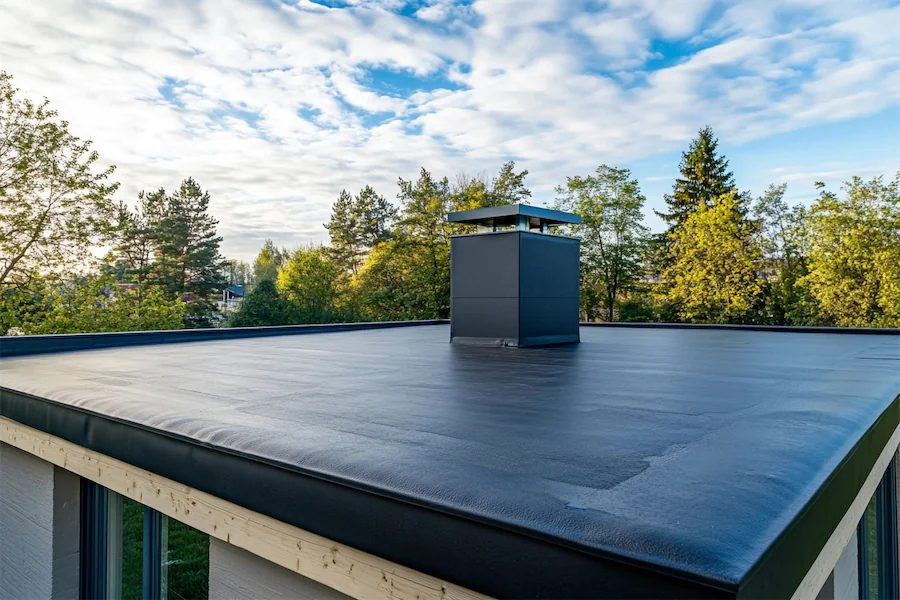A Modified Bitumen (Mod Bit) roof is a type of asphalt-based roofing system designed for buildings with low-slope or flat roofs. It incorporates polymer-modified bitumen membranes, which enhance the material’s flexibility, durability, and resistance to environmental elements.
History and Origins of Modified Bitumen Roofs
Introduced in Europe during the mid-1960s, modified bitumen roofing systems were developed to improve upon traditional built-up roofing (BUR) methods. They gained popularity in the United States in the late 1970s, offering a more flexible and resilient alternative for flat roofing applications.
Key Features of Modified Bitumen Roofs
- Durability: Modified bitumen roofs exhibit high tensile strength, making them resistant to tears and punctures caused by foot traffic or environmental factors.
- Flexibility: The addition of polymers like Styrene-Butadiene-Styrene (SBS) or Atactic Polypropylene (APP) enhances the membrane’s flexibility, allowing it to accommodate building movements and temperature fluctuations without cracking.
- Waterproofing: Multiple layers of bitumen provide excellent waterproofing capabilities, effectively preventing water infiltration.
- UV Resistance: Certain types of modified bitumen, particularly those with APP modifiers, offer enhanced resistance to ultraviolet radiation, prolonging the roof’s lifespan.
Types of Modified Bitumen Membranes
- SBS (Styrene-Butadiene-Styrene): Known for its rubber-like properties, SBS-modified bitumen offers superior flexibility and is typically installed using cold adhesives or heat welding methods.
- APP (Atactic Polypropylene): APP-modified bitumen behaves more like plastic and is often applied using torch-down techniques. It provides excellent UV resistance and durability.
Applications of Modified Bitumen Roofs
Modified bitumen roofing systems are suitable for various building types, including commercial, industrial, and residential structures with flat or low-slope roofs. Their robust performance makes them ideal for areas experiencing extreme weather conditions.
Considerations When Choosing Modified Bitumen Roofs
- Installation Methods: Common application techniques include torch-applied, cold-process adhesives, and self-adhering membranes. Each method requires skilled professionals to ensure proper installation and safety.
- Maintenance: Regular inspections and maintenance are essential to address potential issues such as surface cracking or blistering, thereby extending the roof’s service life.
- Environmental Impact: While modified bitumen roofs are durable, their production involves petroleum-based materials. However, some systems can incorporate reflective coatings to improve energy efficiency.
Conclusion
Modified bitumen roofing systems offer a reliable and time-tested solution for low-slope and flat roofs, combining durability, flexibility, and effective waterproofing. By understanding the different types and installation methods, property owners can select a system that best suits their specific needs and environmental conditions.
